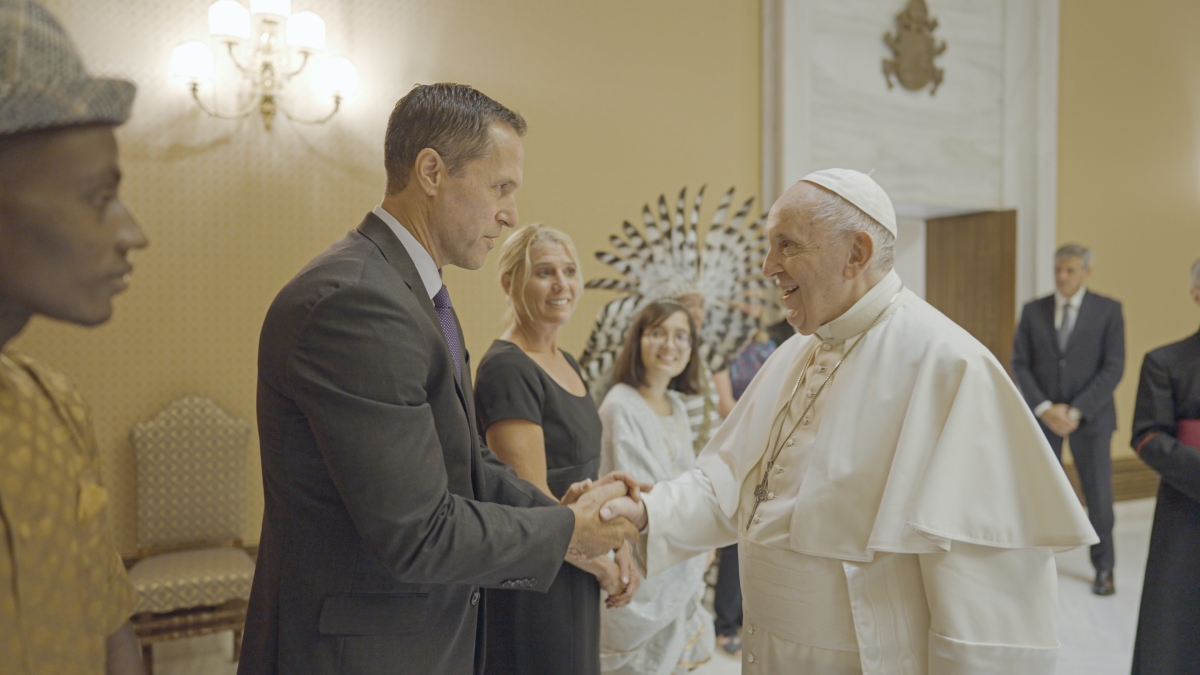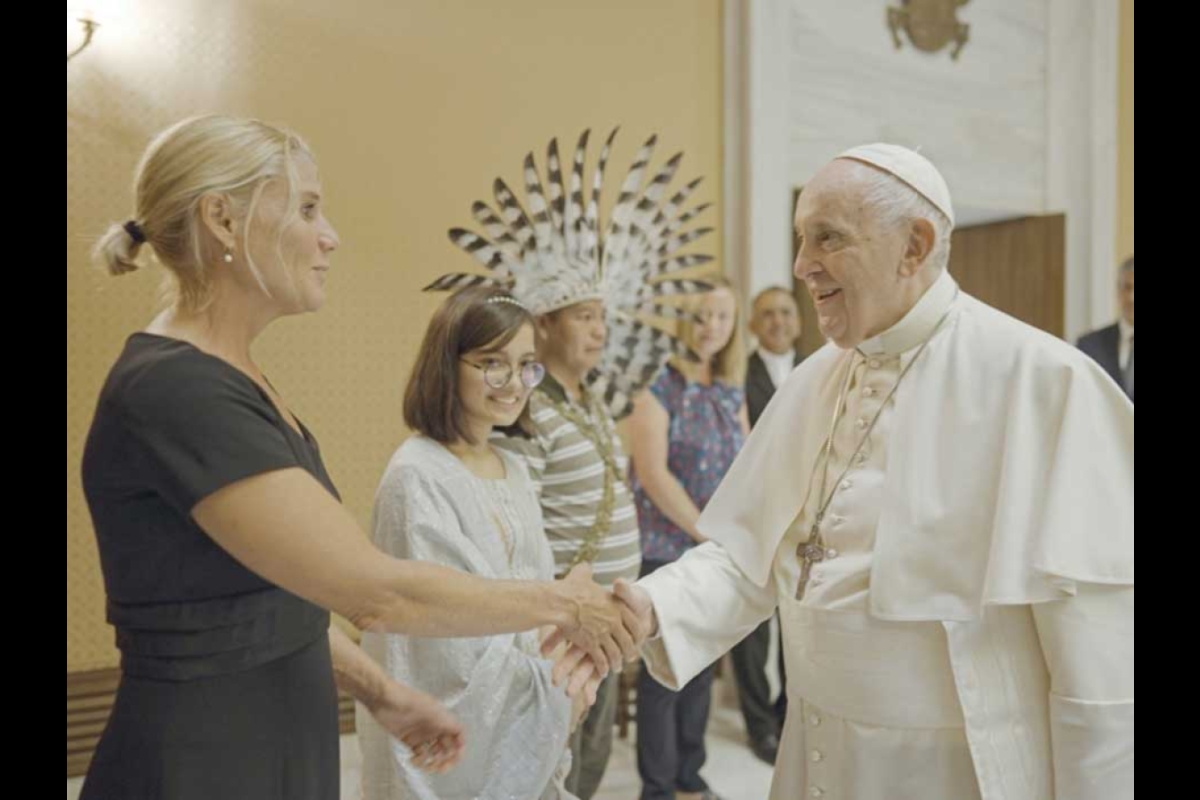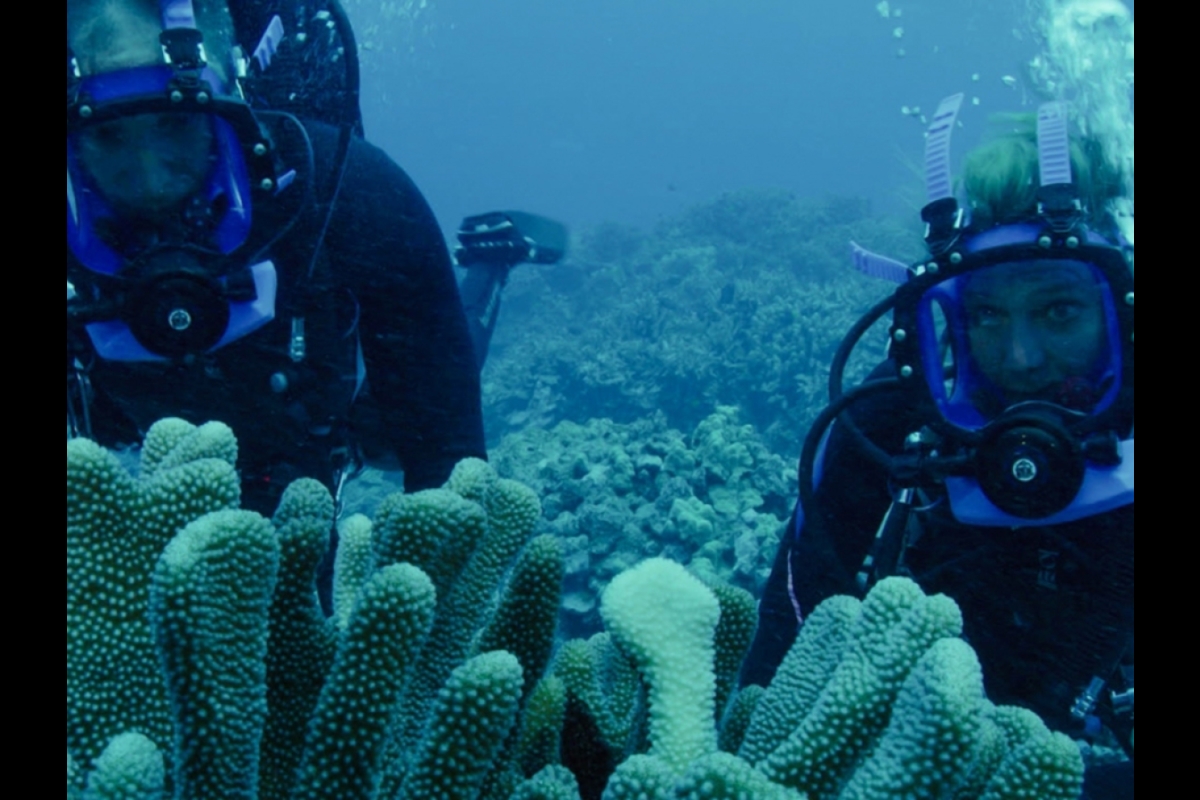Editor’s note: This story is featured in the 2022 year in review.
The world is under threat.
A warming climate, disappearing rainforests and dying corals impact populations around the world, and the solutions to these challenges will require members of society to come together.
A new YouTube Originals documentary titled "The Letter: A Message For Our Earth" centers around the Laudato Si’ — an encyclical letter written by Pope Francis in 2015 to the world, calling for collective action to tackle the environmental crisis and find solutions.
The documentary features voices representing Indigenous communities, people living in poverty, young people and the science community, and follows their journey to Rome to meet with the pope and share their stories on the planetary crisis and the toll it’s taking on nature and people.
Arizona State University scientists and husband-and-wife duo Greg Asner, director of ASU’s Center for Global Discovery and Conservation Science, and Robin Martin, associate professor in the School of Geographical Sciences and Urban Planning, were chosen to represent the global scientific community for the film. In it, they share their latest research mapping underwater heat waves that are threatening coral reef ecosystems.
"The Letter: A Message For Our Earth" premiered on YouTube Originals on Oct. 4 and is available free to stream online.
ASU News talked to Asner and Martin about the documentary, conservation and the role the scientific community plays to generate action to preserve the future of our planet.
Editor's note: The following interview has been edited for length and clarity.

Greg Asner and Robin Martin. Photo courtesy Laudato Si' Organization
Question: Can you tell me about your role in the film?
Robin Martin: Our role was to represent the unseen wildlife. The film focused on our research with coral reefs, but it's symbolic of all wildlife. They wanted to have one individual for each of the elements discussed in the Laudato Si’.
Greg Asner: In the film, there was one 14-year-old girl representing the youth, a chief from the Amazon representing the Indigenous voice and Arouna Kandé, a climate refugee, representing the poor. Robin and I were a pair of voices for wildlife and biodiversity, and throughout the process, the two became interchangeable.
Q: What is the importance of having all these groups represented in the fight against climate change?
Asner: Science cannot solve the climate change crisis alone. As scientists, we measure, provide a compass and provide tools and tool kits, but all people at all levels are needed to tackle this. Scientists know this already, including the most experienced veteran researchers. People cannot just sit back and hope that science will solve the climate crisis or hope that some technological solution will solve it. We need to act and work together.
We need other factors. We need to work with the fact that Indigenous people are stewarding 80% of what's left in the natural world right now, that the youth are who we need to invest in, to train and empower, and then the poor — we're not going to get anywhere unless we address poverty. This mixture of action and solutions has to happen; this is all known.
Q: It seems as if there’s been a call to act for decades now, but how do we spur change? Where should time and resources be invested?
Asner: Yes, we’ve heard that message before. What I'm saying is it's got to be taken to scale right away. This needs to be a solutions-oriented story.
As scientists, and I don't mean just Robin and I, but the entire science community, we have generated a huge number of tools — whether they're natural capital tools, like reforestation tools, or reef restoration and carbon reduction tools. A thousand tools have been generated, talked about, presented, iterated and are ready to implement. But we have got to get people working in this space to implement the science. Science is not the answer alone, but it's the nail and hammer of how to help get us there.
Martin: We can't continue down past track periods. What's important in the next steps is that we do it thoughtfully and don't think that technology is going to solve it all. We have to bond together, force the solutions and make them happen. We have the tools to do it, we just have to do it now.
Q: The documentary highlights your work assessing the impact of climate change on coral reef ecosystems. How much time do we have before shallow reefs are lost?
Asner: The reason why coral reefs are highlighted here is that coral reefs are the world’s biome that is going to disappear first. The latest Intergovernmental Panel on Climate Change (IPCC) report very starkly says if we don't do something, the reefs are not going to make it to 2030 or 2040. It's happening now.
That ecosystem is going to collapse in my career. So the time element of this is really important. It's not abstract in any way. If we get to 2 degrees celsius average temperature rise, we'll lose nearly all shallow coral reefs worldwide.
Q: Speaking on a panel during the Vatican movie premiere last week, Hoesung Lee, chair of the IPCC, celebrated both of you for your participation in film and your biodiversity research. In our fight against climate change, what do you think the role of scientists at ASU and beyond should be moving forward?
Asner: To me, to have Dr. Lee there was a huge relief because he is the absolute top of the supreme court of climate change science. We at ASU aren't a religious organization by any means. We're a public institution, but our scientists are participating far outside of the realm to generate action and solutions, and even IPCC has acknowledged that.
I hope that scientists can find the time and take the risk to work way outside of their science community. Working with a major religious organization — in this case, working with Pope Francis and the Catholic church — is one massive example of that. We didn't go small, we went big.
Martin: The pope is a conduit not just to Catholics, but someone who's a cultural and spiritual leader far outside of science that people listen to and respect. That is also what's important about Laudato Si', is that it was written for everyone. That was part of the reason why Greg and I decided to do this particular intervention — it's a call to everyone to help save the Earth.
Top image: Greg Asner and Robin Martin meet with Pope Francis at the Vatican. Image courtesy Laudato Si' Organization
More Environment and sustainability

ASU researchers test environmental risks of tire emissions on Arizona highways
The Greater Phoenix area’s roadway grid system is the envy of urban planners everywhere, and the Arizona Department of Transportation, or ADOT, strives for nothing less than…

A 6-month road repair that only takes 10 days, at a fraction of the cost? It's reality, thanks to ASU concrete research
While Arizona’s infrastructure may be younger than its East Coast counterparts, the effects of aging in a desert climate have begun to take a toll on its roads, bridges and railways. Repairs and…

Mapping DNA of over 1 million species could lead to new medicines, other solutions to human problems
Valuable secrets await discovery in the DNA of Earth’s millions of species, most of them only sketchily understood. Waiting to be revealed in the diversity of life’s genetic material are targets for…







